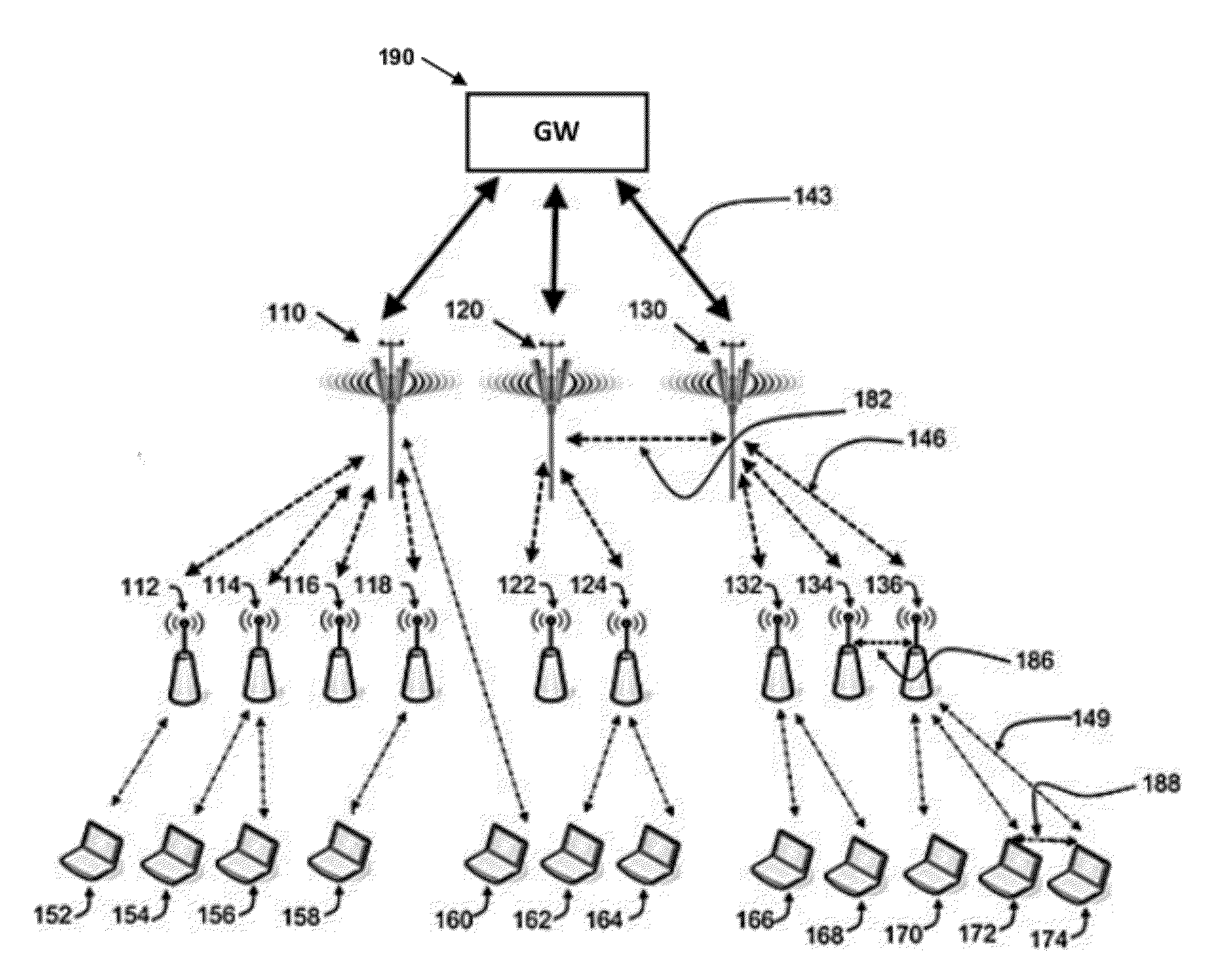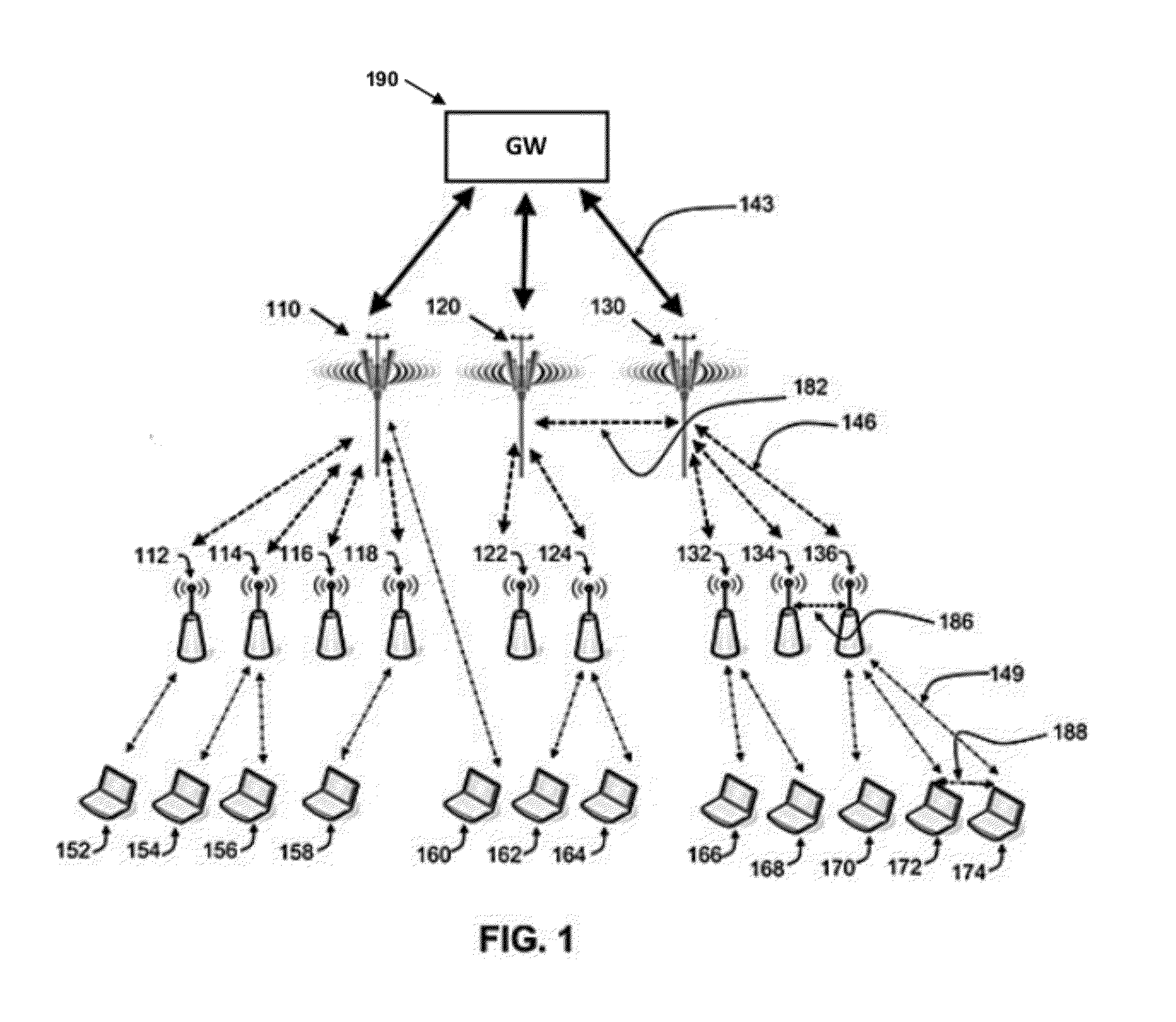Direct Communications in Wireless Networks
a wireless network and direct communication technology, applied in the field of wireless communication, can solve the problems of insufficient network resource management efficiency, failure to provide a complete and satisfactory solution, and delay in the path that extends via the respective higher level entities
- Summary
- Abstract
- Description
- Claims
- Application Information
AI Technical Summary
Benefits of technology
Problems solved by technology
Method used
Image
Examples
example 1
Two ABSs Transmit Simultaneously to Another ABS
[0084]Let us assume that ABS 610 and ABS 630 as illustrated in FIG. 6A use some OFDMA sub-channels for communicating at the same time with ABS 620. At the same time, but on different OFDMA sub-channels, ABS 610 and ABS 630 may transmit in that time slot also regular DL traffic, so they operate in accordance with Mode 2 discussed above.
[0085]In this example, ABS 620 has to extend its DL operation for the duration of the DCO held between ABS 610 and ABS 630, while using only part of its frequency channel capacity for DCO. The rest of the channel capacity may be used only if the frequency resource allocation is similar in both the DL and UL, as in the LTE Standard. For using minimum resources during the DCO, the duration of the DCO should preferably be minimized.
[0086]Now let us assume that ABS 620 is using MIMO on its receiver and can separate the traffic from ABS 610 and ABS 630 by using Multiple Input, Multiple Output (“MIMO”) technolog...
example 2
Relaying MS Data
[0087]MS-MS direct communication is recommended within the same BS cell in case of high MSs' density. This way, an MS transmitting during the UL may receive DCO data from another MS and relay the received data to its serving BS.
example 3
Two MS Pairs Using DCO
[0088]Let us now consider the scenario illustrated in FIG. 7, where two MSs transmit information at the same time: MS 710 transmits directly to MS 720 and MS 730 transmits directly to MS 740. Under normal operating conditions, the above mentioned MSs are served by BS 750 (for example ABS, HBS, and the like). The transmission is done during the up-link sub-frame, such that MS 710 (transmitting) and MS 720 use some frequency resources, MS 730 (transmitting) and MS 740 use another frequency resources, while the other MSs (760 and 770) may transmit to BS 750 while operating under their regular operating mode.
[0089]In this example BS 750 operates in FFR mode, and in case that the reception by MS 720 is interfered by transmissions of another MS (e.g. 780) associated with another BS (e.g. BS 756), the dedicated up-link partition of BS 750 may be used for transmissions sent by MS 710, and since MS 740 is not interfered by any BS, MS 730 may transmit according to Mode 2...
PUM
 Login to View More
Login to View More Abstract
Description
Claims
Application Information
 Login to View More
Login to View More - R&D
- Intellectual Property
- Life Sciences
- Materials
- Tech Scout
- Unparalleled Data Quality
- Higher Quality Content
- 60% Fewer Hallucinations
Browse by: Latest US Patents, China's latest patents, Technical Efficacy Thesaurus, Application Domain, Technology Topic, Popular Technical Reports.
© 2025 PatSnap. All rights reserved.Legal|Privacy policy|Modern Slavery Act Transparency Statement|Sitemap|About US| Contact US: help@patsnap.com



